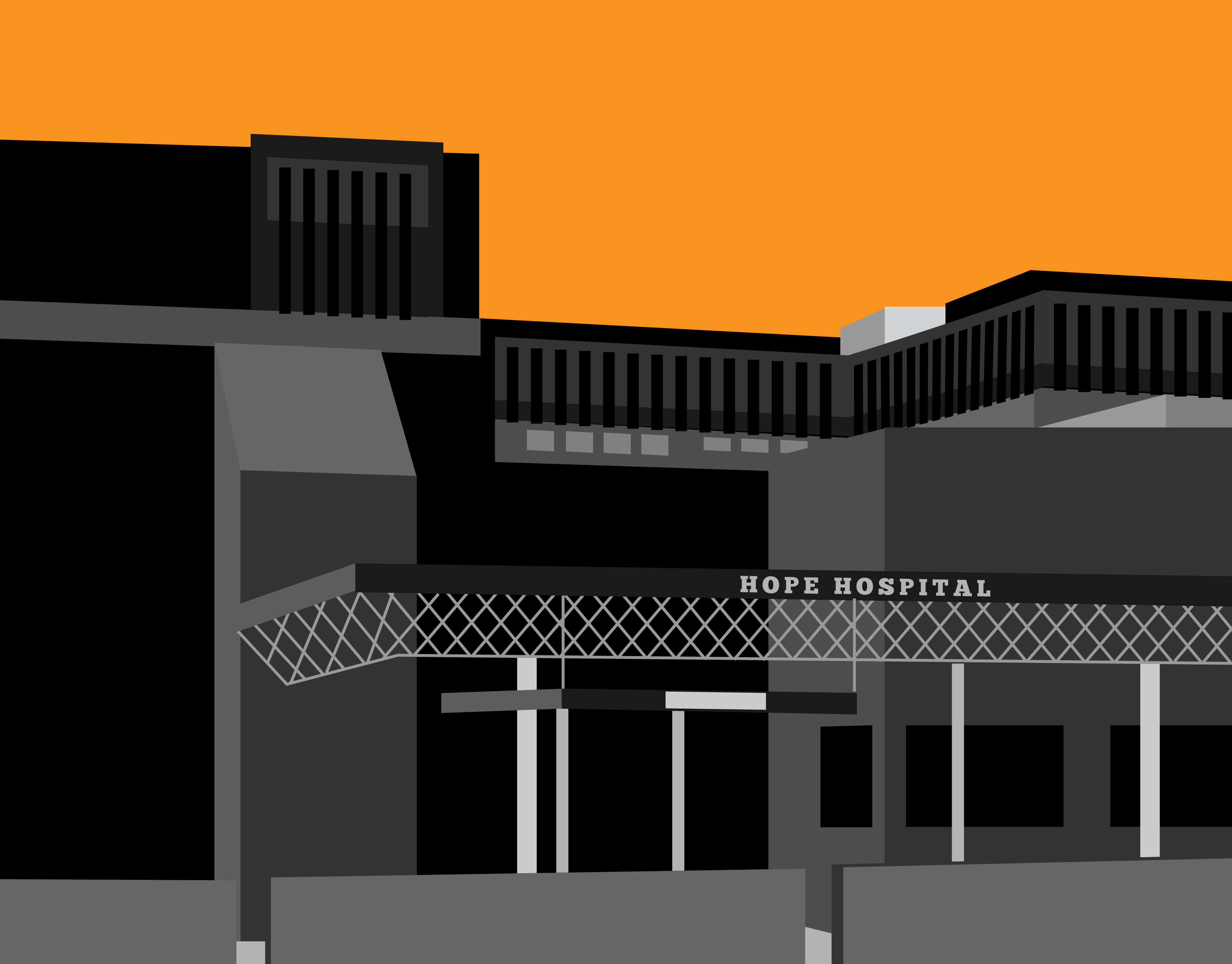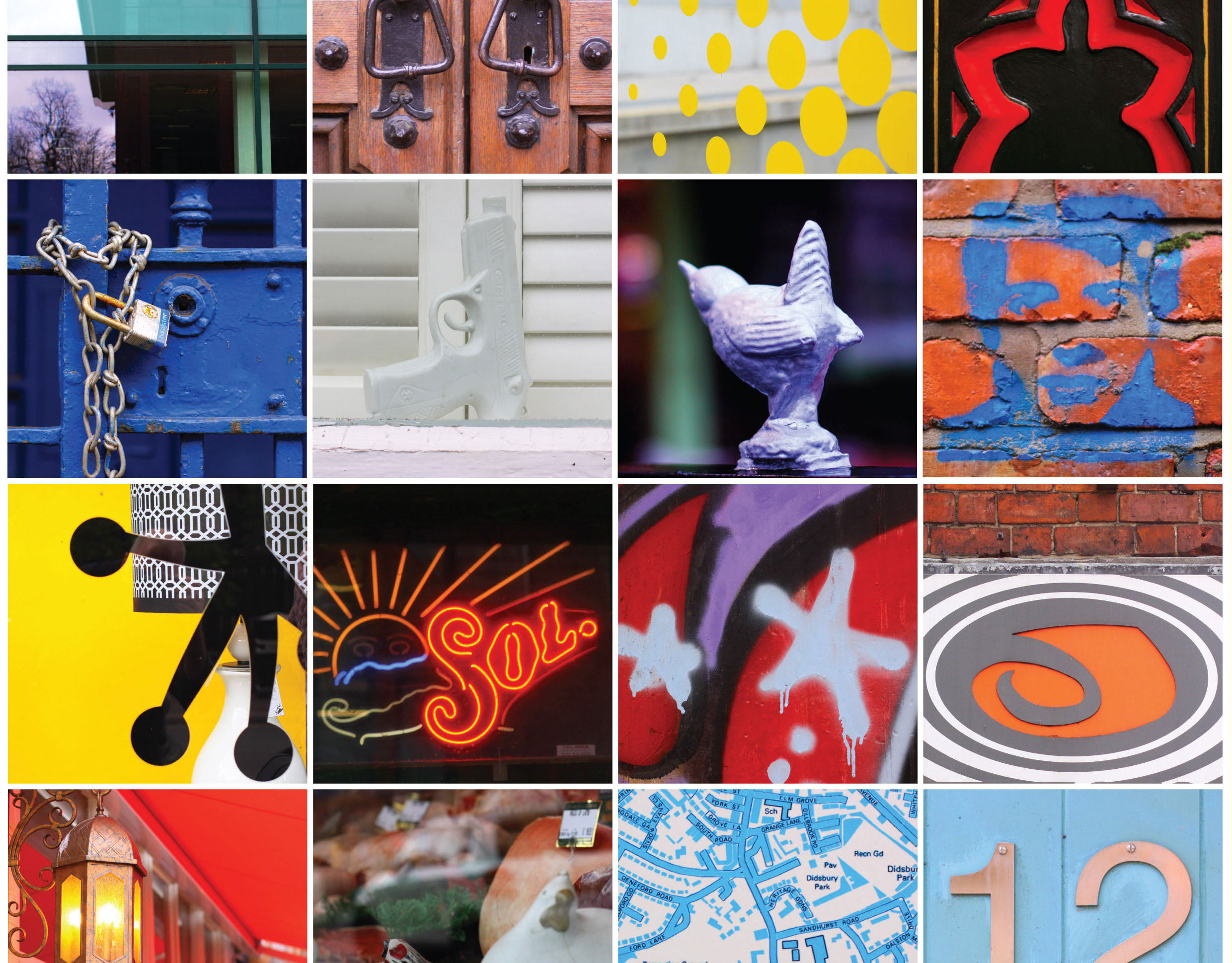Where rivers meet
Stockport is situated where the River Goyt and Tame merge to create the River Mersey. Alongside Otterspool Weir, Romiley, two massive Archimedean screw turbines have recently been installed in a community-owned hydroelectric scheme which abstracts water from the Goyt to power generators which convert the water’s mechanical energy into electricity which is then fed into the national grid.
Stockport is situated where the River Goyt and Tame merge to create the River Mersey. Alongside Otterspool Weir, Romiley, two massive Archimedean screw turbines have recently been installed in a community-owned hydroelectric scheme which abstracts water from the Goyt to power generators which convert the water’s mechanical energy into electricity which is then fed into the national grid.
Where a sculpture hides a car park
The wonderful concrete frieze that screens the car park at Merseyway Shopping Centre in Stockport was designed by sculptor Alan Boyson. Boyson studied at Manchester Regional School of Art from 1950 to 1954, and at the Royal College of Art from 1954 to 1957. He was subsequently a lecturer at the School of Ceramics in Wolverhampton College of Art, during which time he established his own studio and began taking commissions.
The wonderful concrete frieze that screens the car park at Merseyway Shopping Centre in Stockport was designed by sculptor Alan Boyson. Boyson studied at Manchester Regional School of Art from 1950 to 1954, and at the Royal College of Art from 1954 to 1957. He was subsequently a lecturer at the School of Ceramics in Wolverhampton College of Art, during which time he established his own studio and began taking commissions.
Where a viaduct towers
The viaduct was designed by George Watson Buck in consultation with the architect John Lowe for the Manchester and Birmingham Railway. Work began in March 1839 and despite its scale and flooding from the Mersey, the viaduct was completed in December 1840 and services commenced the same month. Roughly 11 million bricks were used in its construction; at the time of its completion, it was the world's largest viaduct and a major feat of engineering.
The viaduct was designed by George Watson Buck in consultation with the architect John Lowe for the Manchester and Birmingham Railway. Work began in March 1839 and despite its scale and flooding from the Mersey, the viaduct was completed in December 1840 and services commenced the same month. Roughly 11 million bricks were used in its construction; at the time of its completion, it was the world's largest viaduct and a major feat of engineering.
Where people kept safe
Opened in 1939, the Stockport shelters were the largest purpose-built civilian air raid shelters in the country. They were originally designed to provide shelter for up to 3,850 people. Due to demand they were extended to accommodate as many as 6,500 during the second world war.
This labyrinth of tunnels, nearly a mile long, were carved out of the red sandstone hills on which Stockport stands. During the Blitz they provided shelter and a way of life for families in and around Stockport.
Opened in 1939, the Stockport shelters were the largest purpose-built civilian air raid shelters in the country. They were originally designed to provide shelter for up to 3,850 people. Due to demand they were extended to accommodate as many as 6,500 during the second world war.
This labyrinth of tunnels, nearly a mile long, were carved out of the red sandstone hills on which Stockport stands. During the Blitz they provided shelter and a way of life for families in and around Stockport.
Where a market trades
The market place remains exactly where it was at the end of the 13th century, after it was established by charter in 1260. Today stalls selling all kinds of everything are housed in the Victorian covered Market Hall, one of the few remaining traditional street markets in the North West and a Grade II listed building that dates back to 1861. One of Stockport’s best known landmarks, the wrought and cast iron framework was originally an open-sided building with a glazed roof.
The market place remains exactly where it was at the end of the 13th century, after it was established by charter in 1260. Today stalls selling all kinds of everything are housed in the Victorian covered Market Hall, one of the few remaining traditional street markets in the North West and a Grade II listed building that dates back to 1861. One of Stockport’s best known landmarks, the wrought and cast iron framework was originally an open-sided building with a glazed roof.
Where art deco is alive
The Plaza Super Cinema first opened its doors to the public on Saturday, October 8th, 1932. It was closed as a cinema in 1966, and like so many others, became a bingo hall. In early 2009, it was closed for a full renovation and refurbishment and was sold to the Stockport Plaza Trust. It was closed during 2009 and volunteers embarked on the restoration of The Plaza to its original 1932 configuration.
The Plaza Super Cinema first opened its doors to the public on Saturday, October 8th, 1932. It was closed as a cinema in 1966, and like so many others, became a bingo hall. In early 2009, it was closed for a full renovation and refurbishment and was sold to the Stockport Plaza Trust. It was closed during 2009 and volunteers embarked on the restoration of The Plaza to its original 1932 configuration.
Where music legends recorded
Strawberry Studios at No. 3 Waterloo Road, Stockport was a recording studio from 1968 to 1993, partly owned and used extensively by 10cc, as well as many other major artists including Joy Division, Neil Sedaka, Barclay James Harvest, The Smiths, The Stone Roses, and Paul McCartney.
Strawberry Studios at No. 3 Waterloo Road, Stockport was a recording studio from 1968 to 1993, partly owned and used extensively by 10cc, as well as many other major artists including Joy Division, Neil Sedaka, Barclay James Harvest, The Smiths, The Stone Roses, and Paul McCartney.
Where a tennis star was born
Stockport is the birthplace of former World No.1 tennis player Fred Perry; winner of 8 Grand Slam singles titles, 2 Pro Slams singles titles, 2 doubles titles and 4 mixed-double titles. He was the first person to complete a Career Grand Slam and also won the Davis Cup on four consecutive occasions.
Stockport is the birthplace of former World No.1 tennis player Fred Perry; winner of 8 Grand Slam singles titles, 2 Pro Slams singles titles, 2 doubles titles and 4 mixed-double titles. He was the first person to complete a Career Grand Slam and also won the Davis Cup on four consecutive occasions.
Where a pyramid was built
The Stopfordian Valley of the Kings. The Pyramid was intended to be the 'signature building' within a larger development scheme that originally included multiple pyramid-shaped buildings. Sources vary on the number of pyramids that were originally planned. Completed in 1992 and home to The Cooperative Bank until 2018, the building was bought in 2019 by the Saudi Arabian investment company Eamar Developments who plan to let the site as office space after refurbishment.
The Stopfordian Valley of the Kings. The Pyramid was intended to be the 'signature building' within a larger development scheme that originally included multiple pyramid-shaped buildings. Sources vary on the number of pyramids that were originally planned. Completed in 1992 and home to The Cooperative Bank until 2018, the building was bought in 2019 by the Saudi Arabian investment company Eamar Developments who plan to let the site as office space after refurbishment.
Where standards were created
Born on John Street, Stockport, Joseph Whitworth was an English engineer, entrepreneur, inventor and philanthropist. In 1841, he devised the British Standard Whitworth system, which created an accepted standard for screw threads. Whitworth also created the Whitworth rifle, often called the "sharpshooter" because of its accuracy, which is considered one of the earliest examples of a sniper rifle.
Born on John Street, Stockport, Joseph Whitworth was an English engineer, entrepreneur, inventor and philanthropist. In 1841, he devised the British Standard Whitworth system, which created an accepted standard for screw threads. Whitworth also created the Whitworth rifle, often called the "sharpshooter" because of its accuracy, which is considered one of the earliest examples of a sniper rifle.
Where a Wurlitzer whirrs
The Stockport Town Hall was constructed between 1904 and 1908 to the designs of Sir Alfred Brumwell Thomas in the free English baroque style, and is a Grade II* listed building. Incorporated within is a very fine ballroom with barrel-vaulted ceiling and rich plaster decoration containing a Wurlitzer Publix One Cinema Organ (Opus 2120) owned by the Lancastrian Theatre Organ Trust, the only such model to leave the United States., the largest Wurlitzer theatre organ in Britain.
The Stockport Town Hall was constructed between 1904 and 1908 to the designs of Sir Alfred Brumwell Thomas in the free English baroque style, and is a Grade II* listed building. Incorporated within is a very fine ballroom with barrel-vaulted ceiling and rich plaster decoration containing a Wurlitzer Publix One Cinema Organ (Opus 2120) owned by the Lancastrian Theatre Organ Trust, the only such model to leave the United States., the largest Wurlitzer theatre organ in Britain.
Where many hats were made
From the 17th century Stockport became a centre for the hatting industry and later the silk industry. Battersby's Hat Factory in Offerton, once had a capacity of 12,000 hats per week but it declined in the second half of the twentieth century and merged with other hat manufacturers in 1966 before hat production ceased altogether in 1997.
From the 17th century Stockport became a centre for the hatting industry and later the silk industry. Battersby's Hat Factory in Offerton, once had a capacity of 12,000 hats per week but it declined in the second half of the twentieth century and merged with other hat manufacturers in 1966 before hat production ceased altogether in 1997.










